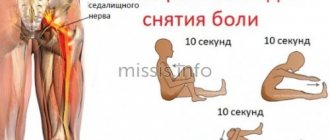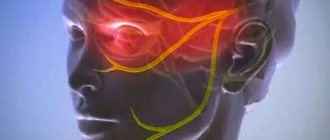Kinds
Discomfort in the hands may vary, since there are different types of pain:
- Burning. There is discomfort and burning, often a feeling of “goose bumps”.
- Aching. Periodically intensify and weaken, maybe 20-30 minutes.
- Spicy. With them, mobility decreases, muscle weakness and discomfort appear.
- Shots. They appear suddenly and last 2-3 minutes. This kind of pain is also called “cutting”.
Whatever the type of pain, it causes a lot of inconvenience. Therefore, it is important to consult a specialist in a timely manner in order not only to eliminate unpleasant symptoms, but also to prevent negative consequences.
Causes
Pain in the hands appears due to:
- bone fracture;
- ligament damage;
- injuries;
- strong physical activity;
- prolonged stay in an uncomfortable position;
- diseases of the musculoskeletal system;
- damage to nerve trunks;
- diseases of the heart, blood vessels;
- tendon inflammation;
- hand joint diseases.
With arthritis, pain appears in the early morning. Even during rest, the discomfort does not go away. There may also be swelling, hyperemia, and fever. With osteoarthritis, the cartilage of the joints becomes thin over time and leads to pain during physical activity, crunching, and difficulty moving.
If the cause is bursitis, then the pain manifests itself in the elbows, where swelling appears. The temperature also rises and the skin becomes red. Rheumatoid arthritis causes pain in small joints and morning stiffness.
Causes of pain
Damage to the sciatic nerve is a consequence of prolonged exposure to negative factors. These may include direct damage to the nerve due to injury or as a result of compression by certain anatomical structures. Thus, any injuries in which the integrity of the bones is disrupted and the soft tissues of the back of the thigh are damaged are a significant risk factor for the development of inflammation and pinching of the sciatic nerve. In addition, a serious threat to its damage is posed by neoplasms of various natures, including vascular ones, as well as diseases of the spine of various natures.
Thus, the causes of pain along the sciatic nerve can be:
- fractures of the pelvic bones, hips (in this case, the nerve can be damaged not only directly at the time of injury, but also during immobilization);
- local infectious processes of any origin, as a result of which pathogenic bacteria can penetrate deep into the soft tissues and cause inflammation of the sciatic nerve;
- systemic infections that damage peripheral nerve fibers and weaken the immune system (HIV, tuberculosis, measles, herpetic infection, diabetes mellitus);
- intoxication caused by the use of drugs, alcohol, toxins;
- metabolic disorders, against the background of which harmful compounds accumulate in tissues and provoke damage to the vessels that supply the sciatic nerve;
- inflammatory diseases of the pelvic organs, including the uterus, appendages, intestines and others, which, in the absence of timely treatment, can provoke the spread of the inflammatory process involving the sciatic nerve;
- medical manipulations on the lower extremities and sacral region - non-compliance with the rules for performing injections, especially blockades often used for diseases of the spine, as well as surgical interventions can provoke inflammation and pain along the sciatic nerve.
In some cases, it is not possible to determine the cause of pain along the sciatic nerve and its inflammation. In such cases, idiopathic neuralgia is diagnosed.
Another common cause of pain along the sciatic nerve is sciatica. Most often, it is provoked by the presence of congenital and acquired pathologies of the spine, which may be accompanied by circulatory disorders in the affected area. As a result of nutritional deficiency and compression, soft tissues suffer, which can lead to the development of an inflammatory process, which may also involve the sciatic nerve.
Sciatica as a cause of pain along the sciatic nerve
Sciatica means pinching of a nerve by one or another anatomical structure, which provokes the appearance of characteristic pain. It is typical for pain to occur under certain conditions.
The appearance of pain can be provoked by getting out of bed, walking or standing for a long time, running, bending, etc. However, initially they can be barely noticeable and go away on their own over time. This condition can persist for several years and is often ignored by people. But over time, continued compression of the nerve leads to the development of neurological symptoms, and sooner or later careless movement or physical overexertion will lead to an acute attack of pain.
It is at this stage that people most often consult a doctor. During the examination, a neurologist using special neurological tests can almost accurately diagnose sciatica. After this, the patient is necessarily sent for a comprehensive examination, the purpose of which is to identify the causes that led to the pinching of the sciatic nerve.
These can include diseases of the spine, excessive physical activity, pregnancy, etc. The most common causes of sciatica are:
- Osteochondrosis and intervertebral hernias are the main cause of radicular syndrome, i.e. pinched nerves. As a result of a sedentary lifestyle, prolonged sitting or excessive physical activity, the intervertebral discs wear out and become thinner. They cease to cope with natural functions, and their shells become thinner. This causes back pain, and subsequently protrusion of part of the nucleus pulposus of the disc beyond the anatomical boundaries, i.e. the formation of a hernia. Pain along the sciatic nerve can be caused by intervertebral hernias that form in the discs of the lumbosacral spine.
- Spinal stenosis is a disease in which herniated discs or other formations compress the spinal canal. This is accompanied by severe pain, which intensifies while walking and doing physical work. Since the spinal cord suffers greatly due to such processes, this affects the quality of functioning of all other nerves and the functioning of internal organs.
- Spondylolisthesis is a disease of the spine, accompanied by a displacement of the vertebra relative to the underlying one by a greater or lesser amount, which can provoke compression of the nerves passing in the immediate vicinity.
- Facet syndrome is a disease in which nerve fibers are pinched in narrow openings between the vertebrae, causing their deformation by osteophytes and other disorders.
- Scoliosis – curvature of the spine in the lateral plane leads to pinched nerves, severe pain and can be accompanied by a number of other complications, the severity of which is determined by the degree of deformation of the ridge.
Also, the development of sciatica and pain along the sciatic nerve can be caused by piriformis syndrome. It is located under the gluteal muscle and in some people the sciatic nerve runs through it. Therefore, with strong physical exertion on the buttocks, a spasm of the piriformis muscle may occur, which will lead to compression of the sciatic nerve and the appearance of corresponding symptoms.
With sciatica, it is extremely important to determine the causes of sciatic nerve compression. Otherwise, prescribing only symptomatic therapy will give only short-term results, while the underlying pathology will progress and not only cause even greater damage to the sciatic nerve, but also cause other complications.
Therefore, for sciatica, treatment is always comprehensive. It includes means to eliminate pain and neurological symptoms, as well as etiotropic therapy. The second is given special attention, since the prognosis of the entire treatment depends on the correctness of its development. In some cases, patients are prescribed conservative therapy, including medication, physiotherapy, exercise therapy and massage, while in others, surgical intervention is required to effectively eliminate the cause of sciatica.
Prerequisites for pain
A number of factors reflecting the lifestyle and individual characteristics of a particular person can lead to the development of the above diseases and inflammation of the sciatic nerve. These include:
- age – middle-aged and elderly people are more at risk of developing neurological diseases due to natural age-related changes;
- excessive physical activity - loaders, athletes and people in other professions whose work is directly related to the need to perform heavy physical work are most at risk of pain along the sciatic nerve;
- pregnancy - increased load on the spine, compression of the internal organs by the pregnant uterus and hormonal changes do not have the most favorable effect on the body and can lead to pinching and inflammation of the sciatic nerve, but often the problem resolves on its own after childbirth.
Which doctor treats you?
If you have unexplained pain in your arm, you should consult a neurologist. Who will do the treatment depends on the cause of the illness. You can immediately contact a traumatologist.
Pain in the arm, regardless of the nature of the pain syndrome (burning, sharp, aching or cutting), requires careful examination and close supervision of a specialist.
IMPORTANT! A person should not ignore this symptom or self-medicate, because the cause of pain in the arm can be associated with both muscle pathology and an inflammatory process that urgently needs to be stopped.
Make an appointment with a neurologist or traumatologist at the Kuntsevo Medical and Rehabilitation Center to determine the causes of the unpleasant symptom and eliminate it.
Sign up
What to do if your hand hurts
27 bones, muscles, nerves, ligaments and tendons are the components of the human hand, thanks to the coordinated work of which we can perform a variety of actions. Nature has arranged all this quite compactly, but if some kind of trouble occurs with one of the parts of the system, the entire body suffers and the quality of human life is greatly deteriorated.
Pain syndrome can affect joints, bones, soft tissues, fingers; observed in individual parts of the upper limb or along the entire length of the arm. One or both limbs can hurt at the same time. Due to the fact that pain in the arm is caused by many diseases, a person has to turn to more than one specialist. It is quite possible that in addition to a therapist, you will need consultation:
- cardiologist;
- rheumatologist;
- traumatologist;
- surgeon;
- neurologist.
Treatment methods
In our center you can undergo diagnostics - MRI, ultrasound. Research is performed after determining the location and nature of the pain. If necessary, additional blood tests are required to determine whether there are infectious and inflammatory diseases in the body.
The treatment method depends on the disease or injury that caused the pain. At the clinic, specialists prescribe the following treatment methods:
- Physiotherapy;
- Manual therapy;
- Reflexology;
- Physiotherapy;
It is up to the doctor to decide which procedures will be performed. Sometimes, when you have pain in your arms, you need to carry out several measures in combination. Experienced neurologists use effective therapy methods. Patients can perform diagnostics, undergo diagnostics and treatment without leaving the clinic.
Features of pain due to damage to the sciatic nerve and accompanying symptoms
When the sciatic nerve is damaged, all symptoms that arise can be divided into 3 groups: pain, neurological disorders and movement disorders. The pain can have a different character from powerful, burning, cutting to aching, pulling. It manifests itself in the back, back of the thigh, lower leg and can radiate to the foot. In this case, pain can be either episodic or constant. In different cases, they occur with different frequency, up to several times a day.
Depending on the existing disease, pain intensifies during physical work, when sitting, standing, running, lifting heavy objects, or when exposed to low temperatures.
If inflammation is accompanied by pinching of the sciatic nerve, the pain is complemented by radicular syndrome. In this case, individual signs of neurological disorders or a whole complex of symptoms may be observed:
- the appearance of acute pain when trying to lift a straight leg up from a supine position and its weakening when bending the raised leg at the knee;
- a decrease in the severity of the Achilles reflex up to its complete absence, which is manifested by a decrease in the amplitude of movement of the foot when struck with the edge of the palm or hammer in the area above the heel;
- pain in the healthy leg when lifting the affected leg upward from a lying position;
- weakening of the knee reflex, accompanied by a lack of reaction to a blow with a hammer on the popliteal region, which normally should lead to rapid extension of the leg at the knee;
- violation of control over the processes of bowel and bladder emptying, up to involuntary defecation and urination;
- decreased erectile function (possible development of impotence);
- increased sweating;
- changes in the skin (it may become pale or, conversely, red, dry, thin and peel).
Damage to the sciatic nerve often leads to a deterioration in the conduction of nerve impulses along it, which is accompanied by impaired mobility of the legs and a decrease in their sensitivity. Therefore, patients often complain of:
- difficulty bending the leg at the knee and ankle joint;
- changes in gait, which is caused by walking on an almost straight leg;
- decreased skin sensitivity, numbness, tingling sensation in the back of the thigh, calf muscle area and foot;
- decreased muscle tone of the lower extremities;
- the patient is in a forced position of the body, bent forward and leaning slightly to the side;
- paralysis of the affected leg, especially the foot, which sometimes simply hangs helplessly and cannot perform a supporting function.
Thus, the nature of the clinical picture largely depends on what disease led to inflammation of the sciatic nerve and pain.
Rehabilitation and lifestyle restoration
After treatment, patients need to recover. This is achieved using:
- maintaining moderate physical activity;
- balanced nutrition;
- compliance with the work and rest regime;
- taking vitamin and mineral complexes;
- maintaining correct posture;
- protection against hypothermia of joints and stress;
- correction of deformed joints;
- disinfection of wounds, scratches and abrasions;
- refusal of monotonous and monotonous work;
- timely treatment of infectious diseases;
- limiting alcohol consumption.
Lifestyle with pain in the hands
A healthy lifestyle is necessary, which consists of the absence of bad habits. To do this, it is important to give up alcohol and cigarettes. It is necessary to monitor your diet. The menu should not include fried, salty, spicy foods. You should drink more clean water and avoid coffee.
Moderate exercise is necessary. Moreover, you can choose running, exercise or swimming. Yoga is also suitable. Only with the right lifestyle can you maintain your health at a normal level. By contacting us, patients will be able to successfully undergo treatment and rehabilitation in one place.







